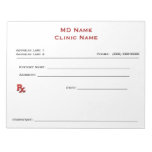We have a large spectrum of patients, ranging from those who cannot afford even the most basic healthcare to those who easily can pay more for “extra” service, such as concierge medicine. However, the current disruption in medicine is focused on the lucrative services (e.g., high-end imaging) rather than the entire healthcare system. This is approach benefits the few patients who already can afford healthcare while ignoring the many who struggle to.
There is recognition among traditional health care organizations that we need to change drastically, and we need to change quickly. However, we remain attached to our old ways of addressing problems and stick with solutions that were built for a different time. We employ physicians, providers, and clinical staff that find it difficult to see the threat because their clinic schedule remains full, their OR time is booked, and the hospitals are busting at the seams.
I love being part of my organization and am proud to be a physician there. As a primary care physician, I see the contribution of high-value care that cannot meet its own overhead. It is hard for me to imagine a different way of practicing medicine. That said, I now communicate electronically with patients and have learned how much medications cost. I’m accustomed to patients finding their diagnosis on Dr. Google before they see me, and sometimes they are right. So, despite practicing medicine for nearly two decades, I have been able to make small adaptations along with the rest of traditional health care.
Unfortunately, those small adaptations will not be enough. The amount of and complexity of information has grown exponentially, which challenges even the most brilliant and well-read physician. This leads to a trend of super-specialization just to keep up with your field, but this is difficult to sustain and often not what patients seek. Therefore, we really do need to look at disruption like a Stitch Fix approach – from beginning to end of the healthcare process, we need to fundamentally change what we do to meet the needs of patients. We cannot focus on individual parts of healthcare to do it effectively.
It is time for bold movements, and I suspect these will come from outside of traditional healthcare. However, it is not too late. Much like the entrepreneur I mentioned, we have the ability to look around and see things not as they are, but as they are becoming, and use our knowledge, expertise, and common sense to design the future.




No comments:
Post a Comment